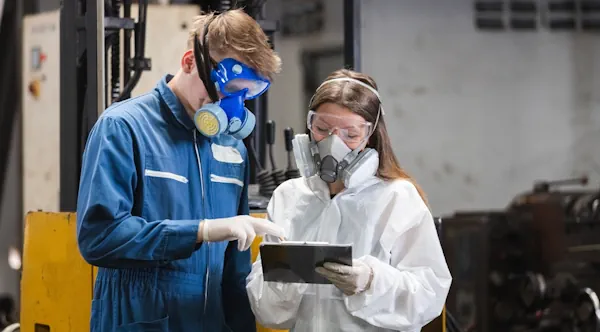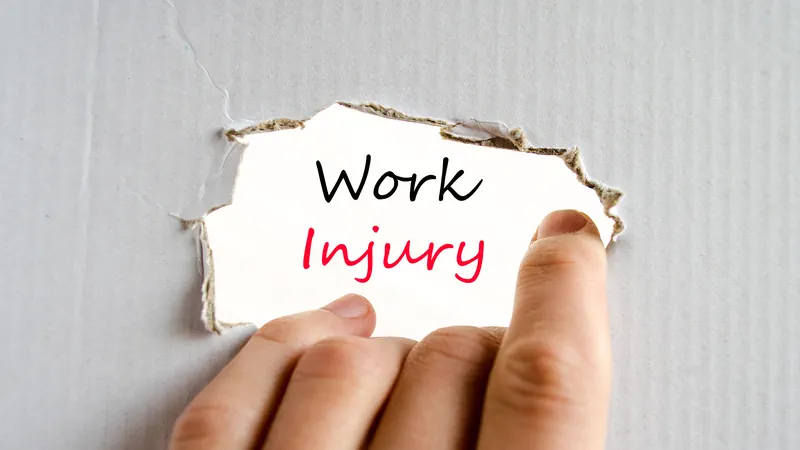Even though workplace safety is essential to a successful business, accidents and injuries still happen, which impacts the organisation’s financial health and the well-being of its employees. However, to successfully manage the complexities of work-related injuries and maintain a safe work environment, you must first understand employers’ legal obligations and the rights of injured workers.
This article examines the scope, causes, and prevention of workplace injuries, and the function of workers’ compensation and employers’ legal duties to support injured workers.
About Work-Related Injuries
Most work-related injuries have an immense impact on both employees and employers. Frequent outcomes include reduced productivity, substantial medical expenses, and workers’ compensation claims. In Australia, a workplace accident can cause a diverse range of physical and mental injuries, from minor incidents to serious accidents that require long-term medical treatment for the injured person who is suffering a serious injury (or permanent impairment). Understanding the reasons behind workplace accidents and how to avoid them is essential to maintaining a safe working environment.
Comprehending workplace injuries’ various forms and causes can facilitate employers’ and employees’ efforts to prevent accidents and enhance workplace safety.
How Common are Workplace Injuries?
Australian Bureau of Statistics data for 2021-22 shows that about 497,300 people had an illness or injury related to their job. Of this group, 31% of injured persons received workers’ compensation for their loss. Additionally, while 85% continued in their existing role, 8% decided to change jobs, and 7% either lost their job or stopped working.
Highest Work-Related Injury Risk
• Accommodation and food services: 5.6%.
• Agriculture, forestry and fishing: 5.4%.
• Transport, postal and warehousing: 5.1%.
Lowest Work-Related Injury Risk
• Professional, scientific and technical services: 1.0%.
• Financial and insurance services: 1.3%.
• Administrative and support services: 2.3%.
Highest-Risk Occupations for Males
• Technicians and trades workers: 24%.
• Machinery operators and drivers: 15%.
• Labourers: 15%.
Highest-Risk Occupations for Females
Community and personal service workers – 27%.
Professionals – 20%.
Do I Have a Valid Claim?
Common Types of Work-Related Injury or Illness
A work-related injury can include various physical injuries and recognised psychiatric disorders like mental stress. While some may be minor, like a scratch, others can have serious accidents with severe consequences, like permanent disability or death.
In Australia, common types of notifiable incidents include the following:
- Strains, sprains, and dislocations
- Musculoskeletal disorders (joint and muscle conditions)
- Open wounds and cuts
- Mental illness triggered by stress and anxiety
- Physical stress-related injuries
- Exposure to harmful chemicals
- Exposure to noise, radiation, electricity, or extreme temperatures
- Slips, trips, and falls
- Transportation accidents, like traffic accidents or incidents in airports and railway stations, also lead to workplace injuries.
Common Causes of Workplace Accidents
Many factors contribute to workplace accidents, such as:
- Inadequate training, which can increase the risk of accidents and mistakes
- Unsafe hazards caused by lifting, pulling, and pushing
- Poor ergonomics can lead to muscle fatigue and an increased risk of musculoskeletal disorders.
- Lack of safety equipment exposes workers to hazards and increases the likelihood of injuries.
Prolonged and severe workplace stress can manifest as mental health conditions and physical injuries, impairing an employee’s decision-making and escalating the accident risk. Hence, addressing these factors can significantly reduce the chance of a work-related injury.
What to do after a work accident >

Claiming Workers’ Compensation for Work-Related Injuries
Workers’ compensation is a vital source of financial support, medical treatment, and rehab for employees who sustain injuries on the job. The work accident insurance scheme aims to compensate workers who have suffered a loss due to a work-related injury or illness. When successful, eligible claimants receive benefits like coverage for medical expenses, financial compensation, and rehabilitation support.
However, the process and eligibility to file a workers’ compensation claim can vary significantly, which means employees must understand their legal rights and how to make a successful claim.
Learn how to make a WorkCover claim >
Who is Eligible for Workers’ Compensation?
To be eligible for workers’ compensation for a work-related injury, your job must be a significant contributing factor to your harm, either triggering a new medical condition or worsening an existing one. In this case, the workplace accident must be reported within 24 to 28 hours. Doing this aids recovery and supplies crucial proof to simplify the claims process. Please know that eligibility exceptions exist, like intentional self-inflicted injuries and injuries sustained by volunteers. Additionally, certain industries or types of employment may have their own eligibility criteria.
Splatt Lawyers will advise your eligibility to claim WorkCover benefits for free – Call Now 1800 700 125.
Free Online Claim Check
Lodging a Workers’ Compensation Claim
To successfully lodge a workers’ compensation claim, please follow these steps:
- First, submit a Workers Injury Claim Form to your employer.
- Contact an experienced workers’ compensation lawyer for legal advice.
- Your employer forwards the form to WorkCover.
- The work injury insurer will provide a written response within 20 days, either accepting or rejecting the claim.
If an injured worker cannot perform his or her usual job duties after an injury and seeks to claim weekly payments, they must provide a Certificate of Capacity with their claim form. This certificate, which your medical treatment provider provides, declares the person’s injury, illness, and work capacity and gives the workers’ compensation insurer the necessary data.

Workplace Safety Measures to Prevent Injuries
Creating a safe and effective work environment requires a robust process to prevent a work-related injury from occurring. Employers who introduce and monitor effective workplace safety measures often can significantly lower the risk of illnesses and injuries. Identifying and evaluating possible risks, implementing control mechanisms, and ensuring adherence to health and safety laws and regulations are some examples of these precautions.
Identifying and Assessing Potential Hazards
An employer’s duty of care extends to identifying and evaluating potential workplace risks. This process includes regular health and safety audits to find potential workplace hazards.
Performing a workplace hazard assessment using best practices entails:
• Voluntary risk assessments
• Using comprehensive risk assessment forms
• Involving your staff in the assessment process
• Fostering a culture of workplace safety
Implementing Control Measures
Employers need to implement control measures to reduce the possibility of illness or injury. These precautions include supplying approved safety gear, establishing safety procedures, and carrying out routine inspections.
A safe work environment depends on ensuring staff members have sufficient training in using safety equipment and are aware of any potential risks related to their jobs. Safety drills can facilitate employee practice and review of safety protocols and procedures, which enhance emergency preparedness and reduce the risk of injuries.

Legal Obligations For Employers
In Australia, employers have a legal obligation to take reasonable steps to ensure a safe work environment and a duty to support employees impacted by a work-related injury. These responsibilities include providing sufficient and safe equipment, having safety plans in place, and having workers’ compensation insurance cover for when the unexpected happens.
Additionally, employers must support an injured person’s return to work process, including modified duties and assisting with workers’ compensation claims.
Creating a Safe Work Environment
Ensuring a safe work environment is key to an employer’s legal duties, which involve:
• Maintaining safe use and storage of equipment
• Ensuring facilities are maintained and in good condition
• Taking sufficient steps to minimise accident risks that cause injury or illness
• Regular safety audits and implementing protocols
• Keeping a workplace injury register
• Having a workers’ compensation insurance policy in place
These are the essential components of a health and safety-focused work environment, including implementing a safety regulator.
Support for Injured Employees
Generally, employer’s have an obligation to support injured employees by:
• Facilitating the return-to-work process
• Supporting opportunities for modified duties
• Providing additional support and resources to help the employee adjust to their new role
• Assisting employees with filing workers’ compensation claims by providing information, guidance, and help with paperwork
• Ensuring they work in a safe environment while recovering
Seeking Legal Advice for Work-Related Injuries
If you have a work related injury, speaking with a personal injury law firm helps protect your rights and guarantees you receive all the available benefits, including a common law payout. Legal representation is particularly beneficial in cases involving employer negligence, severe injuries, or when the workplace insurer disputes a claim.
To improve your chances of success, a lawyer or solicitor will advise you on compensation matters, help gather compelling proof, and represent you in mediation or court proceedings. Ensure your rights are respected and access all your entitlements by contacting an expert compensation lawyer now. Call 1800 700 125

Experienced Workplace Accident Lawyers
Contact our workplace accident lawyers now to understand your right to seek compensation. For free, our legal team will seek to:
• Understand the circumstances of your work-related injury
• Determine who is responsible for your loss
• Advise on your right to make a workers’ compensation claim
• Your chance of a winning outcome
• Potential barriers to success
Relax knowing Splatt Lawyers‘ legal services are provided on a 100% no win, no fee basis, which means you pay when you win and zero if you lose. Call Now – 1800 700 125
Get Started Now- It's Free
Work Injury Lawyers Nearby
Workplace Injury FAQs
What are the most common types of work-related injury?
A work related injury can occur at your workplace, during work related travel, while on a break, or as a consequence of work tasks. In Australia, an injured worker could have physical injuries or psychological disorders, an illness or disease, or death from a particularly dangerous incident.
What qualifies as a workplace injury?
A wide range of medical conditions can qualify as workplace injuries, including physical and psychological disorders, illness, and occupationally acquired diseases like asbestosis and silicosis. You must demonstrate that your illness resulted from your employment or from engaging in work-related activities for it to be considered a work-related injury.
Which work-related injuries need to be reported?
Any work-related incidents that cause a minor or serious illness or injury or result in a fatality should be reported to the health and safety regulator.
What is an example of a serious injury at work?
A serious injury at work typically requires hospitalisation or urgent medical attention, like burns, ear or eye damage, back or spine trauma, or loss of limb or bodily function.
How can employers help with preventing accidents at work?
By evaluating risks, implementing risk-reduction measures, and maintaining safety protocols, employers can contribute to preventing work-related injuries and maintaining a safe workplace.
